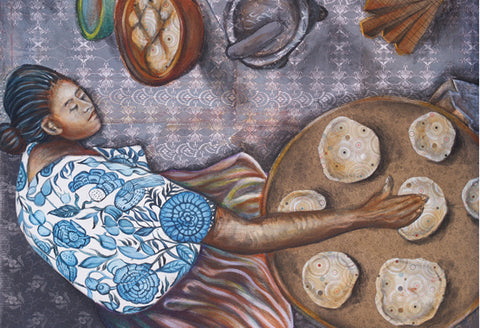
This activity is a tasty one… literally.
Last week we received a request from one of our blog readers for a multicultural food project.
Like you, we love food activities because they’re guaranteed to be interactive and engaging. Students just eat them up. (Okay, we’ll stop with the puns.)
Of course, being interactive and engaging is just the start. Not only is this project 100% multisensory, it also addresses a number of FLL and 21st skills.
So engage, eat, and enjoy. Oh, and let us know how it goes in the comments.
Students will…
- Prepare, serve and enjoy a decorated appetizer: bocaditos.
- Learn the names of specifically chosen foods, drinks, and utensils.
- Use polite expressions appropriate to different age groups.
- Practice impromptu social interactions.
- Learn numerical quantities.
- Improve listening comprehension by following requests from “guests.”
- Practice writing with correct expressions in “Thank You” notes.
Skills:
Vocabulary development, polite expressions, verbal communication, cooperation, cultural awareness, writing for communication
Preparation
This activity is especially effective when introduced after the “Silverware Placemats” project from the Beginner Manuals. If you’d like a free copy of that activity, email us by clicking here (the subject line “Silverware Placemats” will generate automatically).
- Bring tortillas, cream cheese, raisins, carrots and radishes, napkins, three to four trays, plastic knives and spoons, and placemats.
- Wash and slice carrots and radishes.
- Place all the ingredients in separate, small bowls (enough so that all of the tables or stations in your classroom have their own complete set of ingredients).
-
To really add some multicultural flavor, learn more about the
history of the tortilla by visiting either of these two great sites:
The Crazy Tortilla or What's Cooking America.
Instructions
- Start by creating a word wall using select vocabulary and phrases.
- Introduce your word wall using only the target language along with the items you’ve brought in and pictures from the Internet.
- Begin the activity by telling your students, “There’s a treat in store.”
- If you have a microwave, preheat the tortillas.
-
Take time to validate use of polite expressions and model them with your students:
Spanish: “Por favor, ¿me puedes dar un poco de jugo?” “Muchas gracias.”
English: “Please may I have some juice?” “Thank you.” - Divide your class into two groups: chefs and guests.
- For the guests...
Hand out paper, crayons, and markers and tell the guests to start preparing “Thank You” cards.
Encourage the guests to decorate their cards with pictures of their own favorite treats. This will help later on when you discuss the activity. - For the chefs...
Once the guests are busy, take the chefs aside and show them how to make bocaditos with the ingredients you prepared beforehand.
Don’t be afraid to get silly and have your students create faces on their tortillas with the food items.
After they understand the basic steps, assist the chefs in serving the guests by placing one tray of prepared ingredients at each table and then helping their classmate make bocaditos one-on-one. -
While they’re preparing and serving each other, encourage target language dialogue among your students.
Spanish: “¿Cuántas pasas quieres?” “¿Necesitas mi ayuda?” “¿Quieres un poco de mis pasas?” “Por favor, ¿Me puedes pasar el tenedor?”
English: “How many raisins do you want?” “Do you need my help?” “Want some of my carrots?” “Can you please pass that fork?” - Eat and enjoy!
- If you have time, repeat the activity by switching the groups.
Suggestions & Expansions
- Talk about the favorite treats from your students’ countries or families.
- If it is appropriate, ask parents to bring in traditional snacks from their cultures to expand the activity even more.
- Try going on a field trip to a grocery or convenience store. Enlist the aid of the produce manager to give students a mini-tour.
- Have students assist during regular snack times and identify food and utensils. Again, take time to validate use of polite expressions: e.g., “Permiso” and “Muy amable” or “Please” and “Thank you.”
- Follow the same basic format and celebrate national holidays with other traditional snacks throughout the year.
- Have students write invitations in Spanish asking parents to enjoy a snack prepared by students either in the classroom or at home.
- Lastly, check out two of our favorite children's book on the subject of tortillas...
Don’t Miss Out...
Every week we offer teaching tips, classroom management strategies, and free games here on the blog.
To make sure you don’t miss out, and to get a free 1-Hour Sample Lesson from either of our ESL or SSL Curriculum Kits. Click here.


